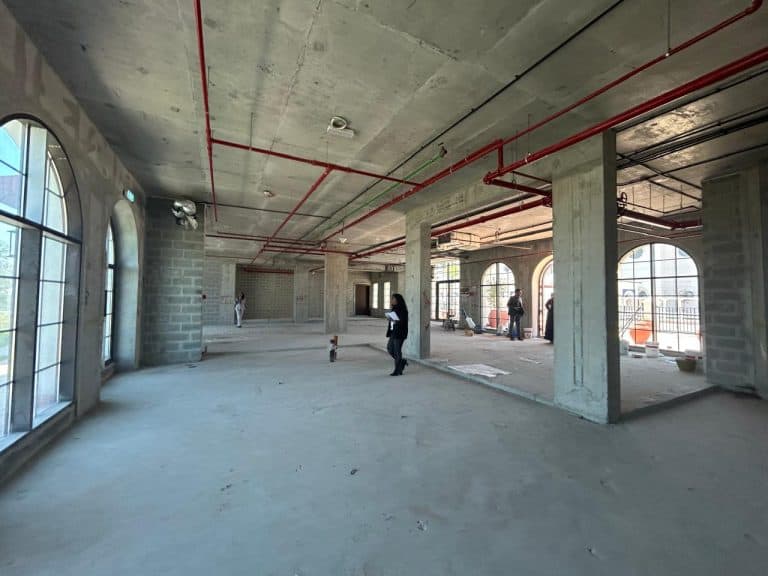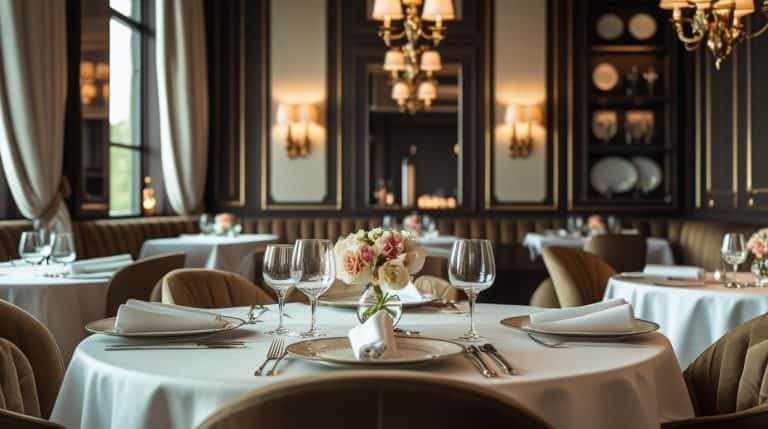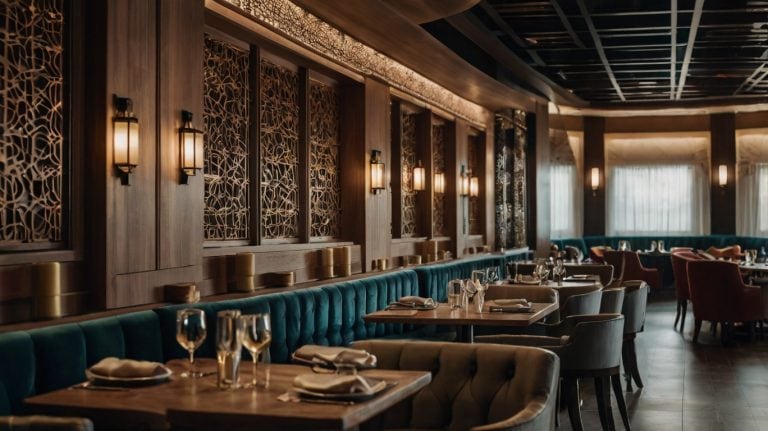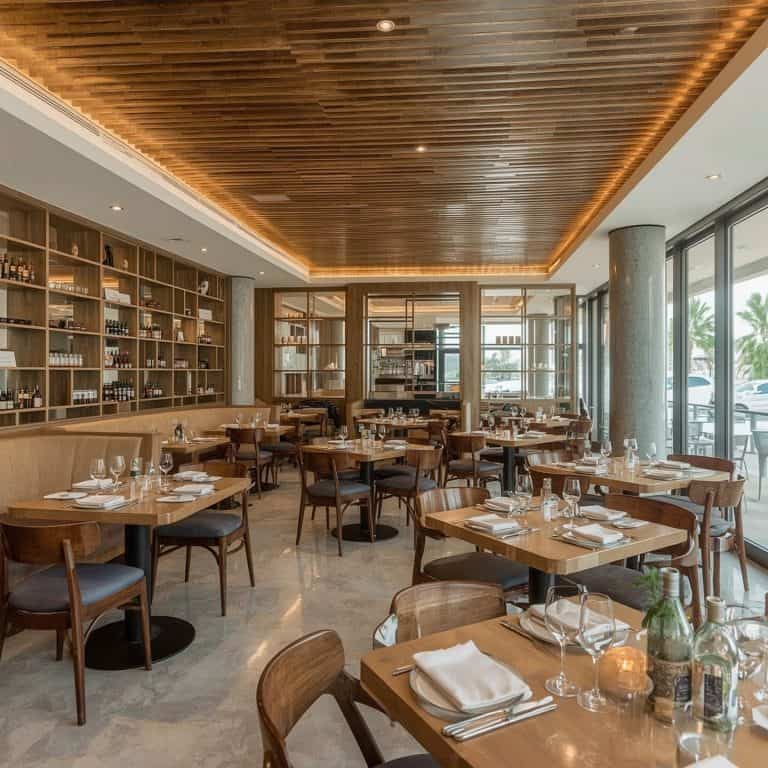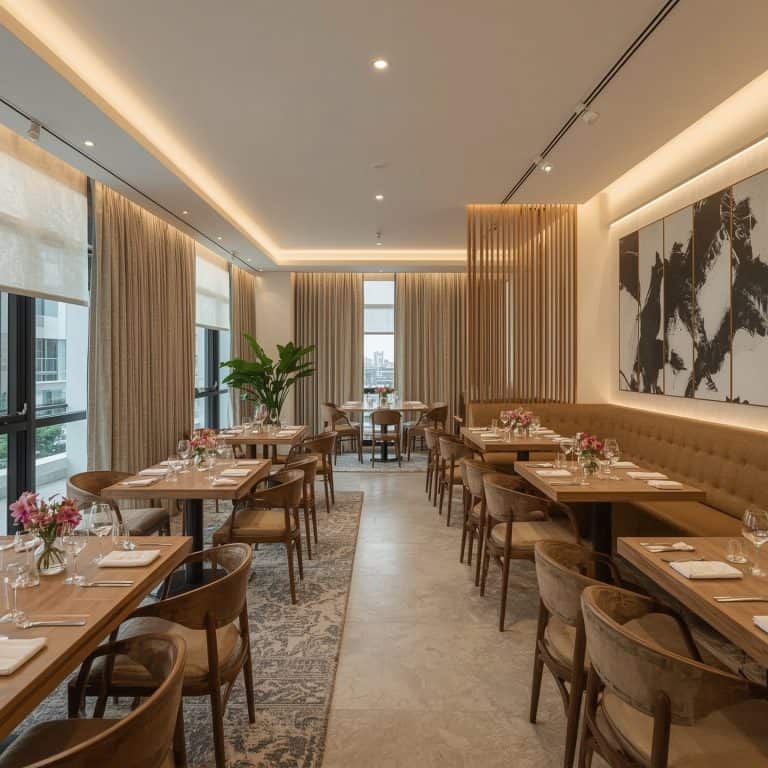11 Powerful Restaurant Interior Design Trends in Dubai
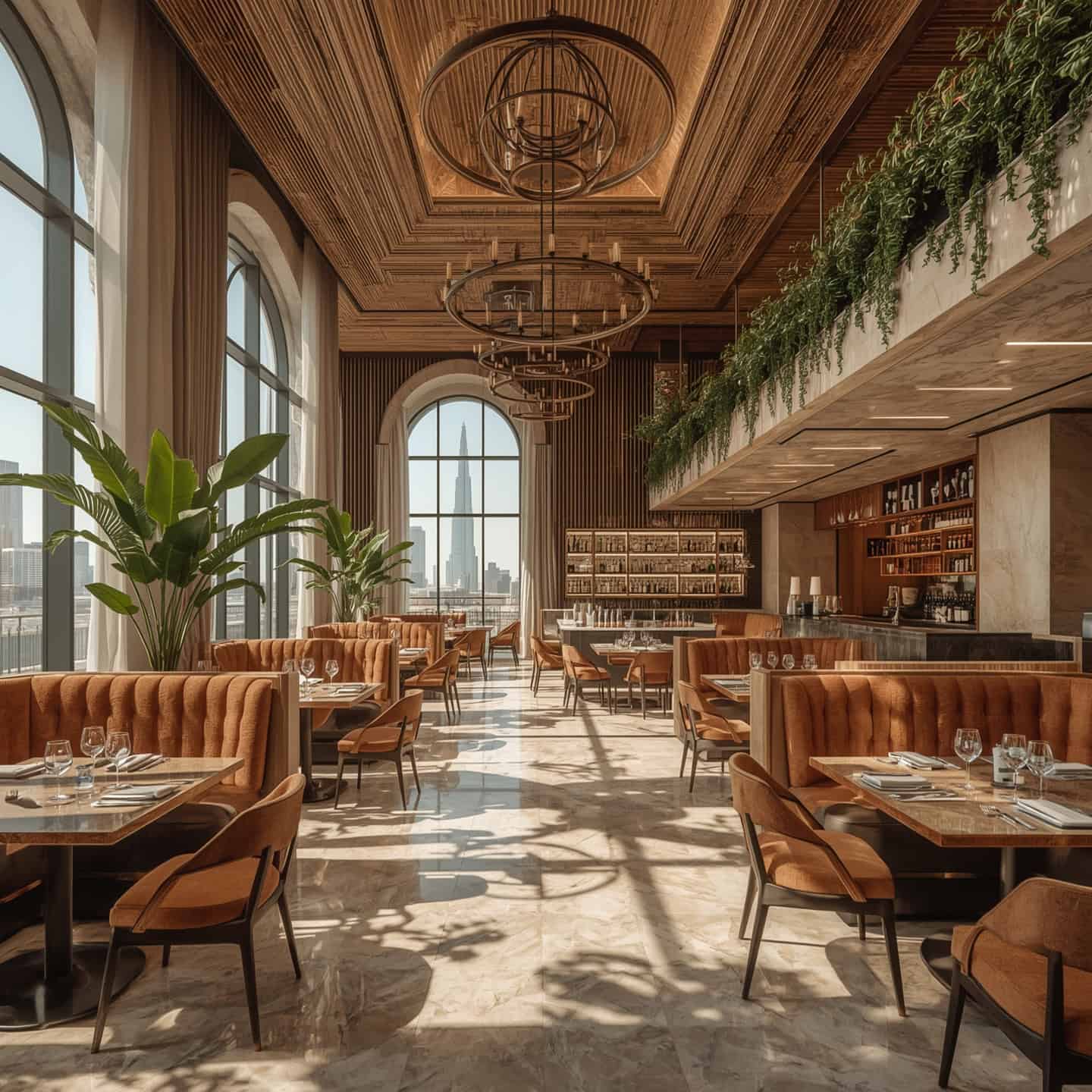
11 Must-Know Restaurant Interior Design Trends in Dubai
Restaurant interior design trends in Dubai can make or break your space—some attract loyal customers, while others drive them away. If you’re considering opening a restaurant or updating your current space in Dubai, you’re in the right place.
In a city known for luxury and innovation, your restaurant’s interior isn’t just decoration—it’s part of the dining experience. People in Dubai don’t just go out to eat; they want to feel something the moment they step inside. Whether you’re serving sushi or shawarma, the design of your space matters more than ever.
Over the years, I’ve worked with restaurant owners, chefs, and fit-out contractors across Dubai. The biggest lesson? The most successful restaurants are not always the ones with the best food, but rather the ones where people love to stay, take photos, and return.
This guide will showcase the top restaurant interior design trends in Dubai, accompanied by real-life examples and clear, easy-to-understand explanations. You’ll walk away with practical ideas you can use—whether you’re working with a designer or just brainstorming.
🎯 Book a Free Restaurant Design Strategy Call. Let me help you build a place that people rave about.
What Are the Restaurant Interior Design Trends in Dubai?
Dubai is a trendsetting city when it comes to restaurants. With fierce competition and high customer expectations, standing out is a must. Here are the 10 biggest interior design trends shaping Dubai’s restaurants in 2025—and how to use them.
1. Biophilic Interiors (Bringing Nature Inside)
What it is: Biophilic design means using elements of nature—plants, wood, stone—to create a calming, earthy feel.
Why it works: Diners in Dubai appreciate the contrast between the city’s fast-paced atmosphere and the relaxing, green interior. It makes the space feel more welcoming.
Example: Restaurants like Wild & The Moon and SEVA Table utilize hanging plants, bamboo finishes, and natural sunlight to create a relaxed and healthy ambiance for their guests.
2. Sustainable and Eco-Friendly Designs
What it is: Using recycled or locally sourced materials, LED lighting, and smart water-saving plumbing.
Why it works: Eco-conscious diners care about where materials come from, and restaurants that reflect those values stand out.
Example: A local café in Al Quoz used reclaimed wood furniture and bamboo tableware to reduce its carbon footprint, and it became a hit with the eco-friendly crowd.
3. Modern Arabic Fusion (Old Meets New)
What it is: Taking traditional Middle Eastern patterns, arches, and mashrabiya (wooden screens) and mixing them with modern furniture and layouts.
Why it works: It fosters a strong cultural identity while still maintaining a stylish and current feel.
Example: Mara Lounge in Jumeirah features Moroccan tiles and Arabic calligraphy on the walls but pairs them with minimalist lighting and sleek chairs.
4. Smart Technology in the Dining Space
What it is: Adding devices like digital menus, touchless payment systems, app-controlled lighting, or smart temperature control.
Why it works: Customers appreciate the convenience, and restaurant owners value the efficiency. It also looks ultra-modern.
Example: Amazonico in DIFC features smart lighting that adjusts to the mood, making the space feel vibrant during the day and cozy at night.
5. Instagrammable Design Features
What it is: Design elements that people want to photograph, like neon quotes, flower walls, or unique bathrooms.
Why it works: These spots encourage guests to share their experience online, giving your restaurant free marketing.
Example: Saya Brasserie gained popularity not only for its food but also for its distinctive pink floral walls and rose-covered ceilings, which frequently appear on Instagram feeds.
6. Eye-catching ceilings and Floors
What it is: Unique floor tiles, 3D ceiling panels, or murals that add color and character.
Why it works: Instead of only focusing on walls and furniture, designers use every surface to make a statement.
Example: Ninive Dubai features patterned tile floors and dramatic lighting on the ceiling, drawing the eye upward to create a grand space.
7. Open Kitchens & Live Cooking
What it is: Showing off the kitchen instead of hiding it—guests can see their food being prepared.
Why it works: It builds trust, adds excitement, and turns cooking into a performance.
Example: Eataly at the Dubai Mall features a large, open kitchen where chefs prepare fresh pasta and pizza in full view of customers.
8. Modular & Flexible Layouts
What it is: Moveable furniture, foldable partitions, or seating that can switch between solo diners and big groups.
Why it works: You can change the layout quickly for events, private dining, or seasonal menus.
Example: A food hall in Dubai Hills utilizes foldable wooden dividers that can be configured to create 5-person booths or expanded into a long communal table.
🛋️ Ask About Flexible Layout Designs for Your Restaurant
9. Mood Lighting & Ambient Design
What it is: Using layered lights (ceiling lights, wall lamps, spotlights) to control the vibe.
Why it works: People eat with their eyes first, and lighting plays a significant role in how they perceive your food and your brand.
Example: Gaia in DIFC uses soft gold lighting and table candles to create a romantic, upscale feel.
10. Themed Concepts That Tell a Story
What it is: Designing your space around a unique idea—whether that’s a location, a movie, or a cultural theme.
Why it works: It makes your restaurant memorable and creates an emotional connection with your guests.
Example: The Farm in Al Barari is designed to evoke a countryside retreat, featuring rustic wood, expansive windows, and stunning garden views.
🌍 Get a Free Restaurant Theme Consultation »
11. Statement Ceilings & Feature Lighting (Look Up to Impress)
What it is: Statement ceilings and custom lighting features are now being used to turn overhead space into a visual centerpiece. This includes eye-catching chandeliers, coffered panels, wood cladding, mirrored surfaces, and suspended art-like lighting structures.
Why it works: In Dubai’s visually competitive dining scene, a striking ceiling grabs attention and elevates the atmosphere. It also makes compact interiors feel larger and more luxurious—an effective trick without adding square footage.
Example: The ceiling at Cé La Vi Dubai features bold linear lighting and sculptural installations that add drama and upscale energy, setting the tone for a high-end dining experience.
💡 Elevate Your Interior with a Statement Ceiling Plan »
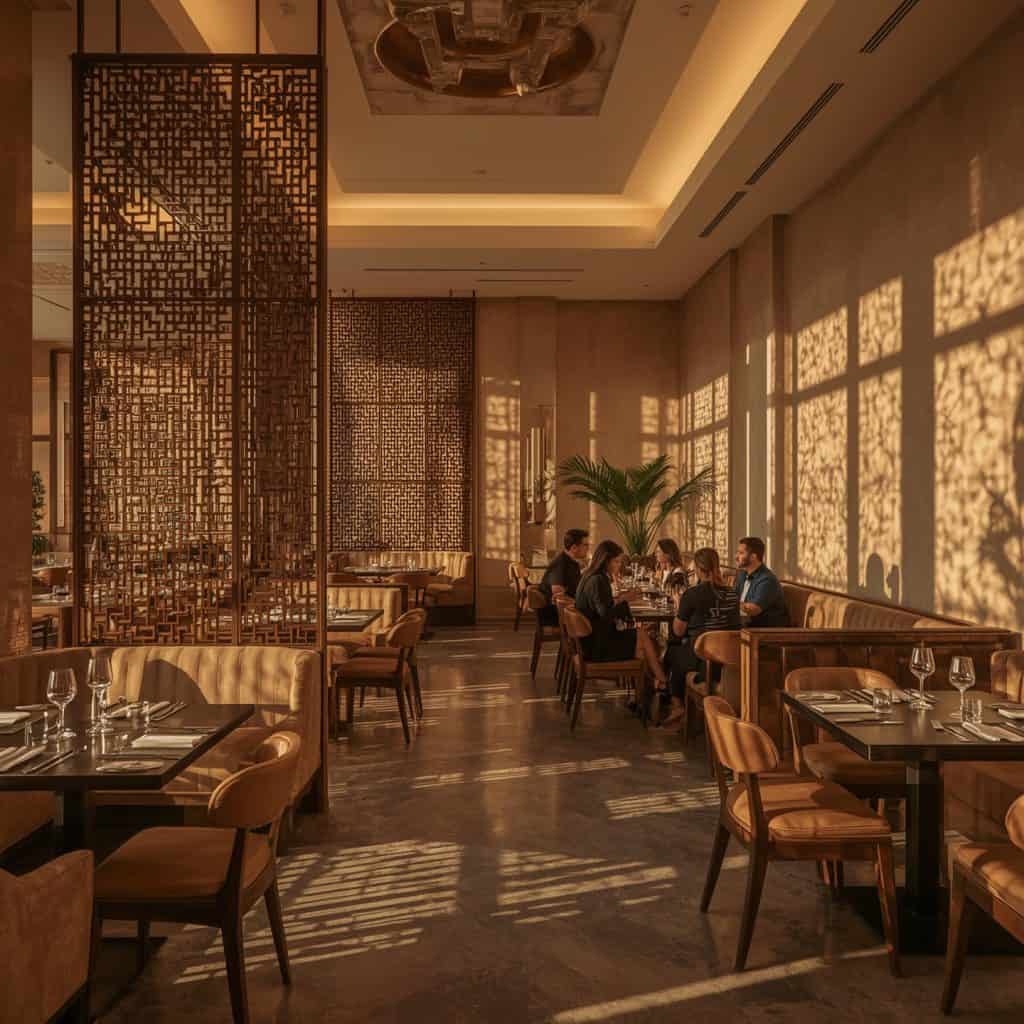
What Is Restaurant Interior Design?
Restaurant interior design is more than picking out colors and chairs. It’s about creating a space that matches your food, brand, and customer expectations. In Dubai, design plays a significant role in determining a restaurant’s success. It can be the difference between a packed house and an empty one.
You want people to walk in and immediately feel something—relaxed, excited, cozy, inspired. That’s what a great interior design does.
How Can These Trends Benefit You?
✅ Stand Out from Competitors – Design helps you tell your unique story in a crowded market.
✅ Improve Customer Experience – The proper layout and lighting can make guests feel more comfortable and encourage them to stay longer.
✅ Boost Social Media Reach – Beautiful interiors = more photos shared = free marketing.
✅ Increase Efficiency – Smart layouts and tech tools help your staff serve better and faster.
✅ Attract the Right Crowd – Design signals what kind of restaurant you are (casual, upscale, trendy, family-friendly, etc.)
Conclusion
Design is no longer optional; it’s essential. The top restaurants in Dubai are winning because they’re not just serving good food… they’re creating unforgettable experiences.
Whether you’re planning a total renovation or just want to freshen things up, these restaurant interior design trends in Dubai can guide your next move.
If you’re looking for someone to help you make sense of it all and turn your dream into a reality, we’re here to help.
🎯 Request a Tailored Interior Design Proposal. Let’s turn your space into something extraordinary.
Frequently Asked Questions
How much does it cost to redesign a restaurant in Dubai?
It depends on the size and materials, but expect a cost of AED 500–2,500 per square meter.
Do I need an interior designer, or can I do it myself?
If you want to save time and avoid costly mistakes, a designer helps a lot, especially with Dubai approvals.
What’s the fastest way to improve my restaurant’s look?
Lighting, paint, and furniture changes can make a significant impact without a complete renovation.
Are there any rules or permits for restaurant design in Dubai?
Yes, the Dubai Municipality has rules governing fire safety, ventilation, kitchen layout, and other aspects. Work with a licensed contractor to avoid delays.
How long does the average restaurant fit out take in Dubai?
Between 6–12 weeks, depending on the size, approvals, and materials used.

